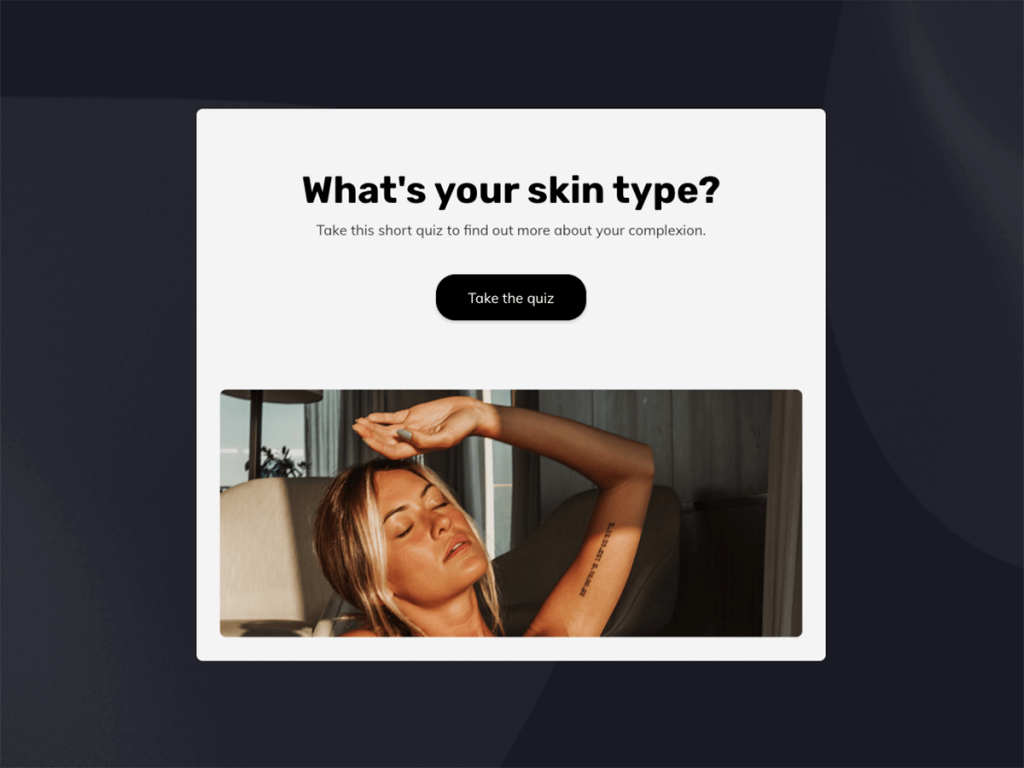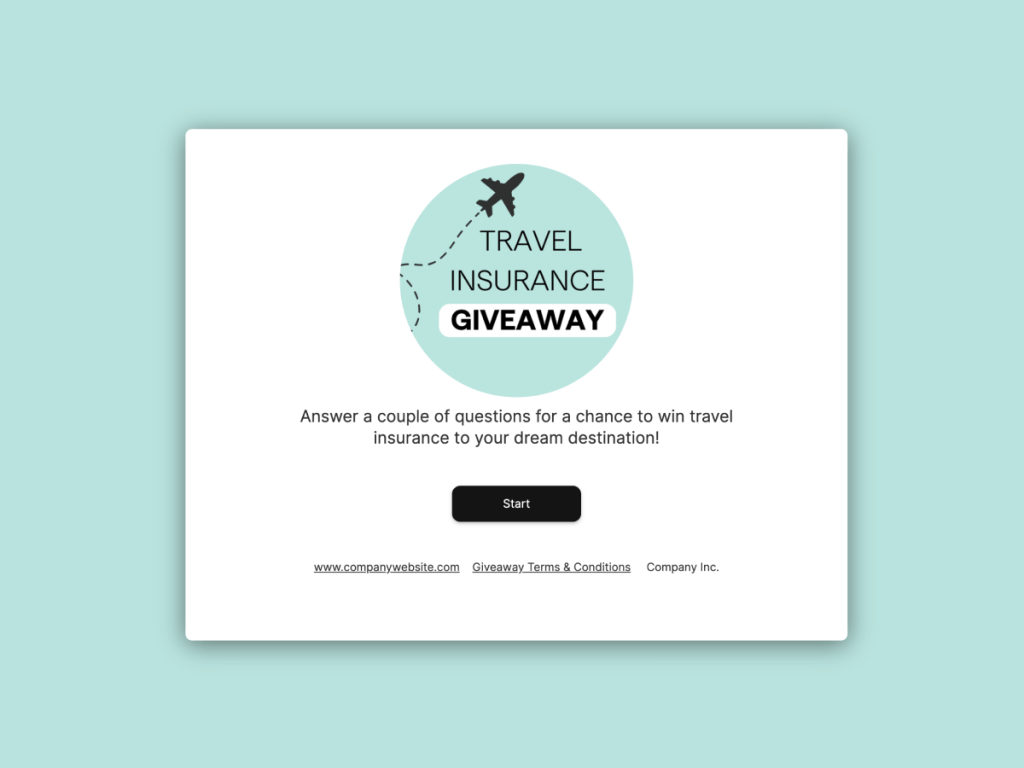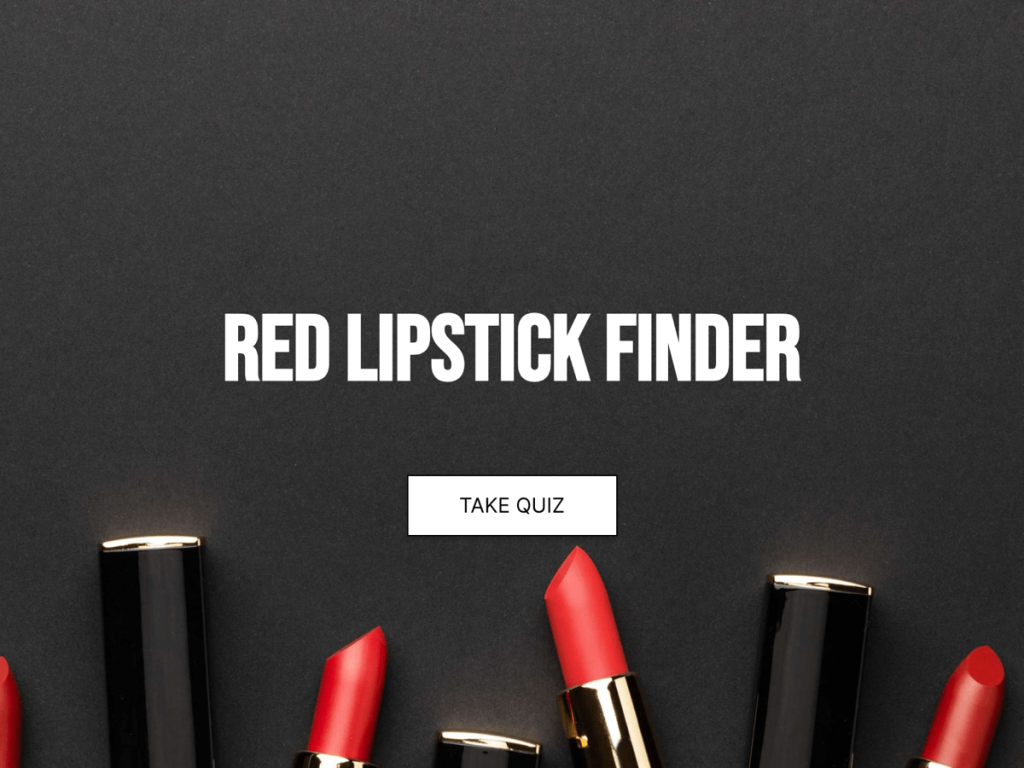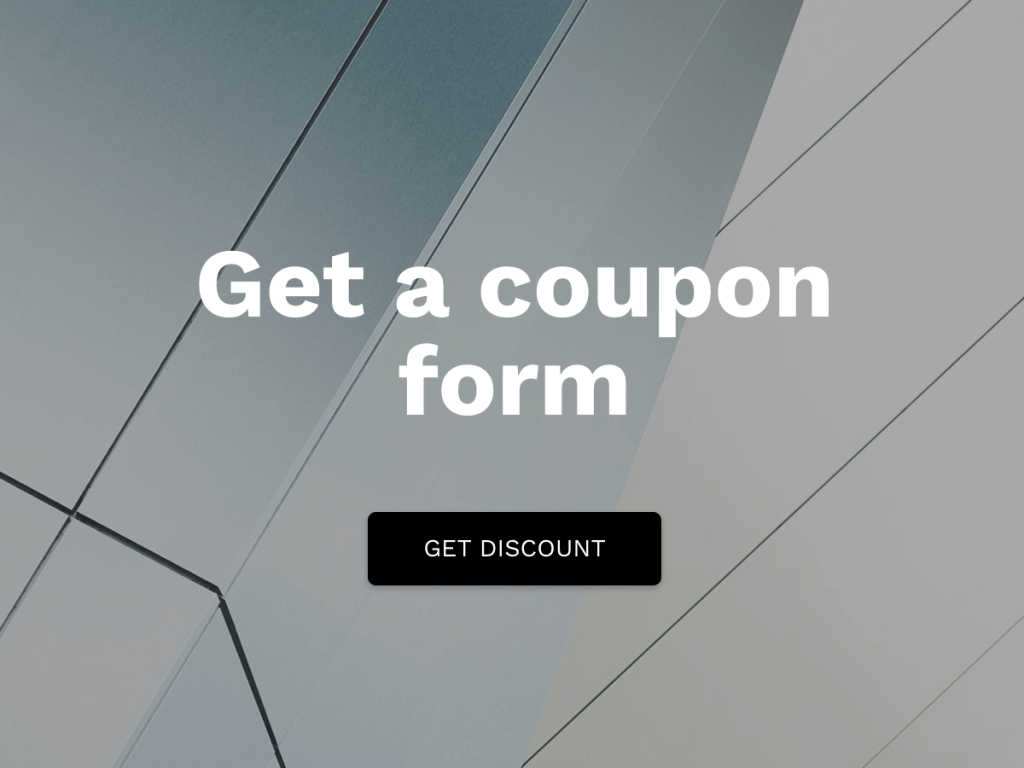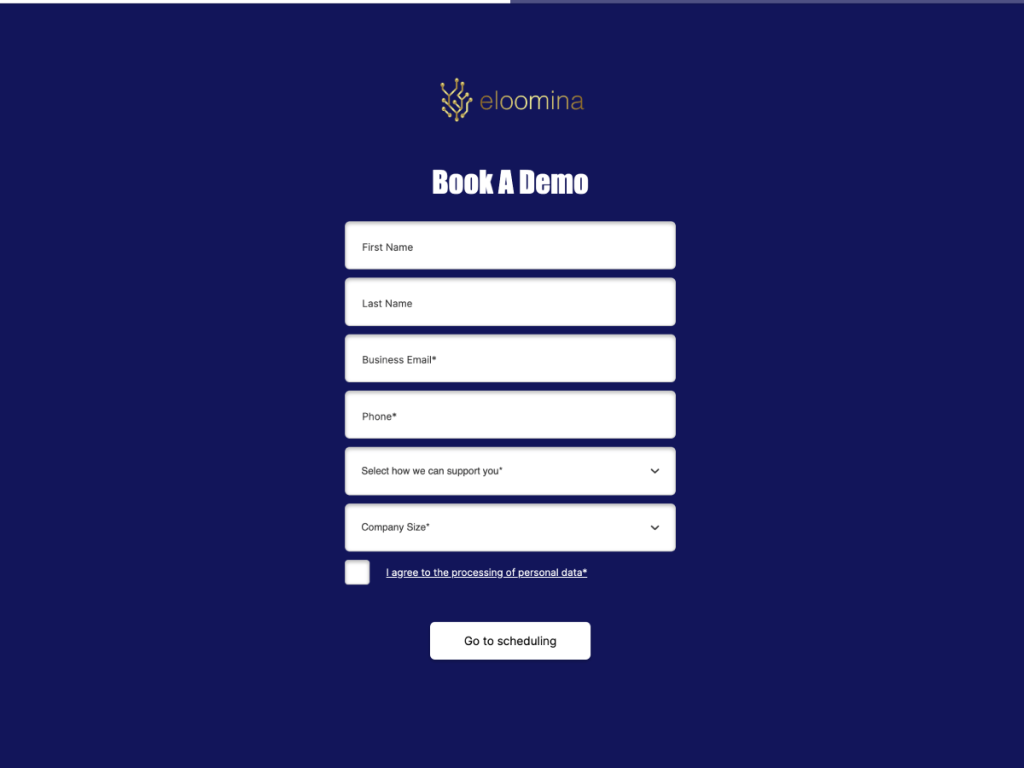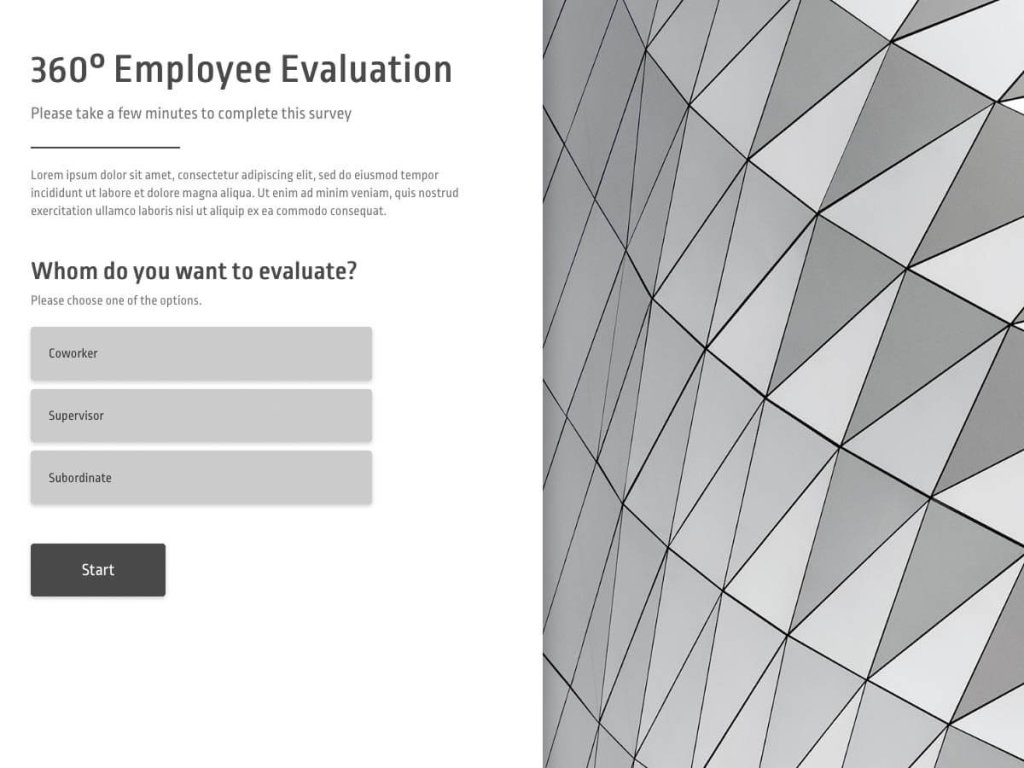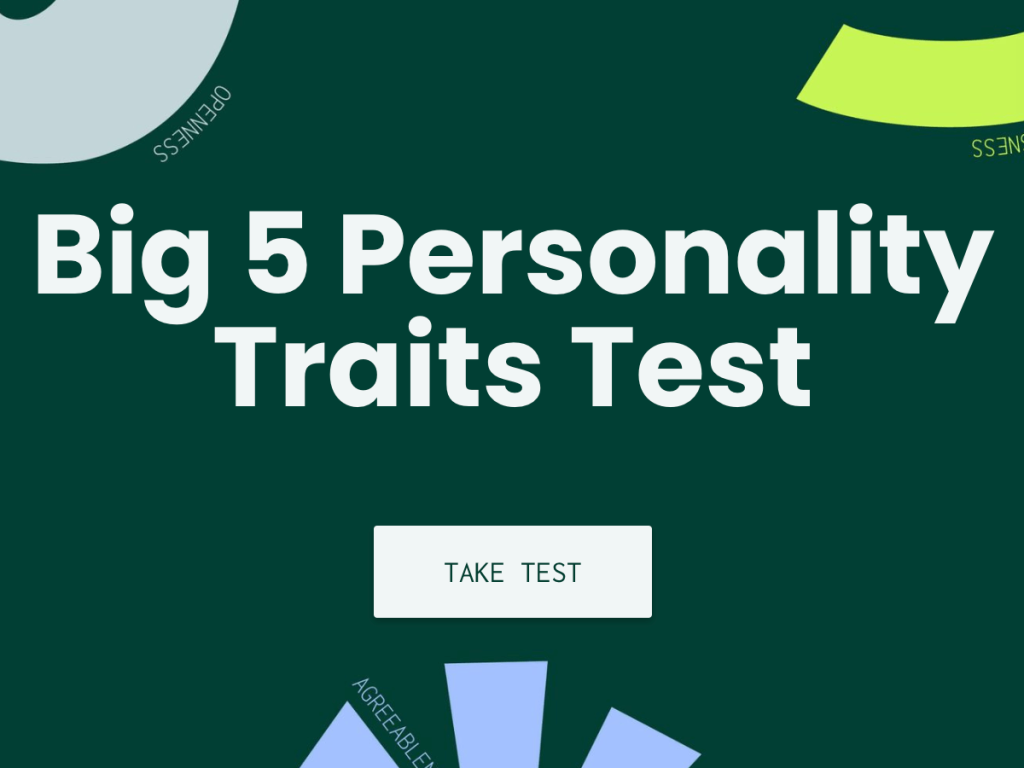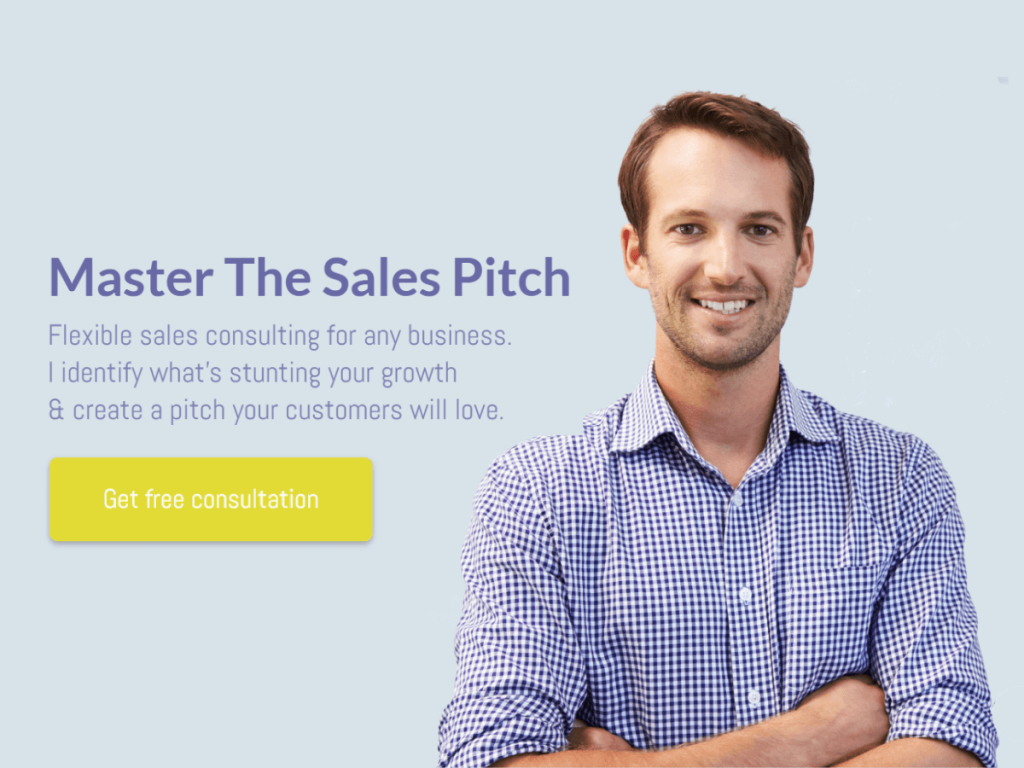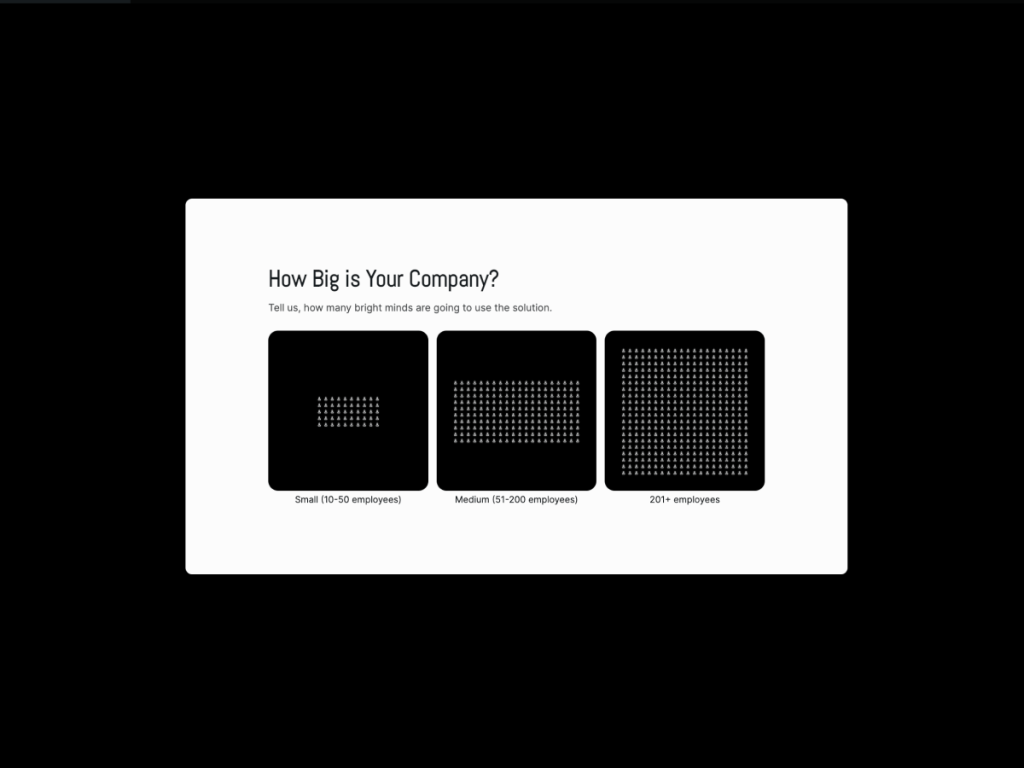Marketing is an annoying industry to be in. Within one year you can go from making pie charts to getting a pie thrown at you for a TikTok challenge. Marketers wear many hats. The more hats they acquire over the years, the more averse they become towards pilling up new ones.
As much as you want to let trends come and go, some are here to stay. Trends stand out because they’re different: they’re changing the industry and raising the bar on what customers expect. Let’s have a look at five marketing trends that will become standard practice by 2026.
1. Product Matching Quiz Trend
Product matching quizzes are exactly what they sound like: they help you match customers with the best products for their needs. A quiz just happens to be the perfect vessel to deliver an engaging and personal experience.
Online quizzes have come a long way from Buzzfeed to business. While we may never stop wondering “What your pizza toppings say about your attachment style”, quizzes in 2026 will tackle more profitable questions. Questions like:
“What glasses suit your face?” to help online shoppers find the right frame for their face shape.
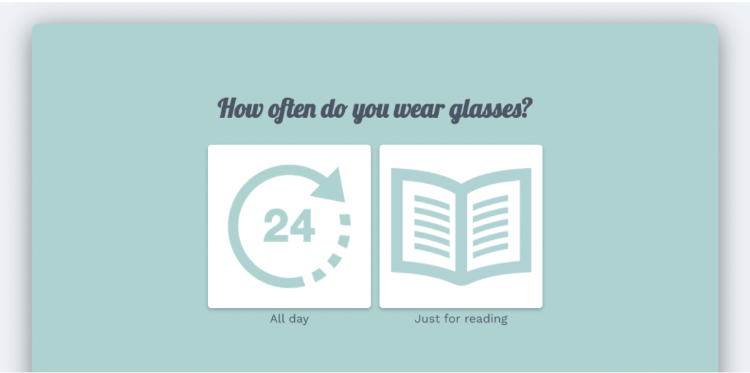
“What’s your perfect shade of red?” to sell a lipstick that matches your skin tone.
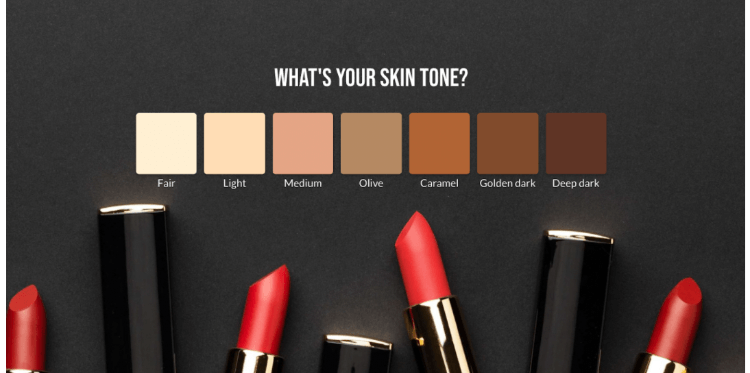
“How much would it cost to put solar panels on your roof?” to calculate the cost of making your home more eco-friendly.
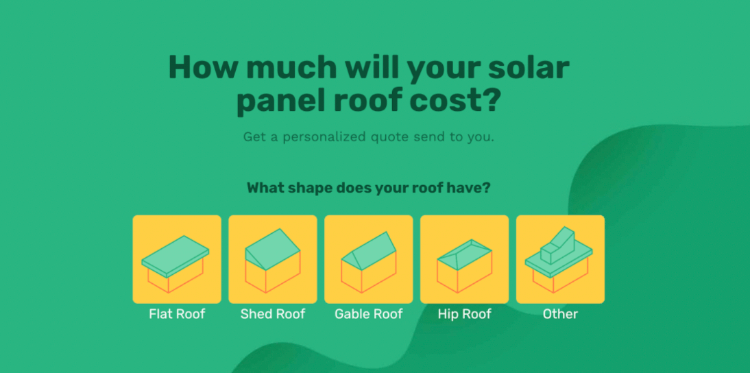
A product matching quiz is data collection served on a fun platter. They help you get more people to answer your questions by making it less about what you’re trying to sell and more about what the customer needs. Which is why Forbes predicts interactive content like quizzes and personality tests to be an upcoming marketing trend.
Create Quizzes For Your Website
Start with customizable templates
B2B Product Finder Template
What's your skin type? Template
Giveaway Form for Insurance Template
What's Your Perfect Shade Of Red? Template
"Keeping Up With Current Events" Quiz Template
Test Your History Know-How Template
Benefits of Product Matching Quizzes
The perfect product matching quiz is not much more than a series of questions you’re already asking your customers at different points in their journey. Asking the right questions in the right way can have a notable impact on your conversion rates.
Quizzes Convert 10x More Than Forms
Despite the twinge of cringe, Buzzfeed quizzes have a 96% completion rate. That’s right. That means pretty much everyone who clicks on your will give you all the information you ask for. Imagine in a world where the vast majority of people who click on your content do the one thing you’re asking them to do.
Traditional grocery-list-like forms only convert about 17% of the clicks. By 2026, marketers will be able to fully understand the engaging nature of quizzes and take advantage of it. Product matching quizzes help you get:
More out of your advertising budget. Grab a calculator and see what 10x conversions would mean for your business.
More personalized onboarding. Quizzes gather a lot of data you can use early on to personalize the way you speak to new customers.
More reach through viral loops. Quizzes are built to be shared on social media. Every time somebody shares your quiz, you’ll reach their friends and followers, who might share it as well. This creates a viral loop.
2. The Automation Trend
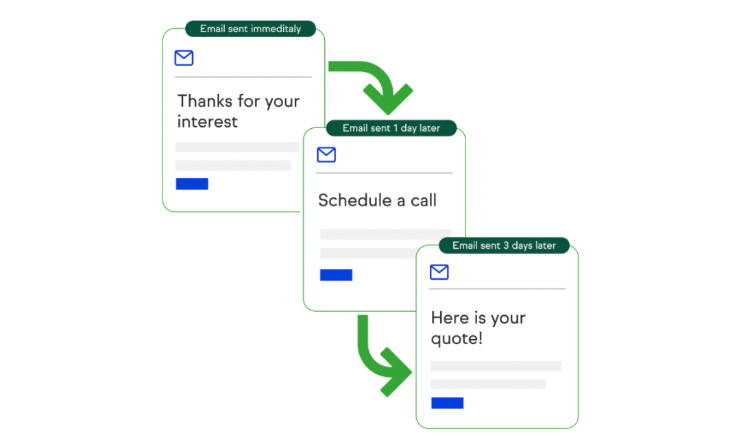
The future is automated and so should be your workflow. Copy-pasting is boring, especially when it’s not necessary. There are so many things you’d rather be doing than hitting the export and import buttons like they owe you money.
Tools that help with all sorts of marketing automation are growing, while talent is scarce. It takes months to hire and onboard a new employee, while tools can be bought and set up in one day.
So why waste human brain cells on something a free automation tool can do? Automating your repetitive tasks helps you focus on more ambitious projects (or have a coffee break, because you deserve one ☕).
If you’ve never thought of automating your daily tasks, finding a place to start can be hard. Worry not, here’s a list of things you can automate today:
2.1 Automated Follow-up Emails
Email is the biggest driver of sales. But following up on sales conversations manually can easily take up most of your week. And you’re too smart to waste your time like that.
HubSpot’s sequences help you make sure your email conversations come to a conclusion other than being left on read. Every-time you send an email, you can quickly set up a follow up email if you don’t get a reply in a few days.
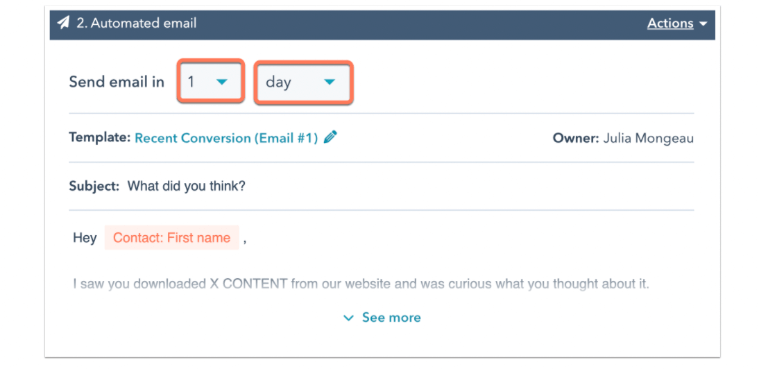
2.2 Automated Post Scheduling
45% of internet users research products on social media. If you want them to find great things about your product, update your page on a regular basis.
With social media scheduling tools like Hootsuite, you can prepare a week’s worth of posts in under an hour.
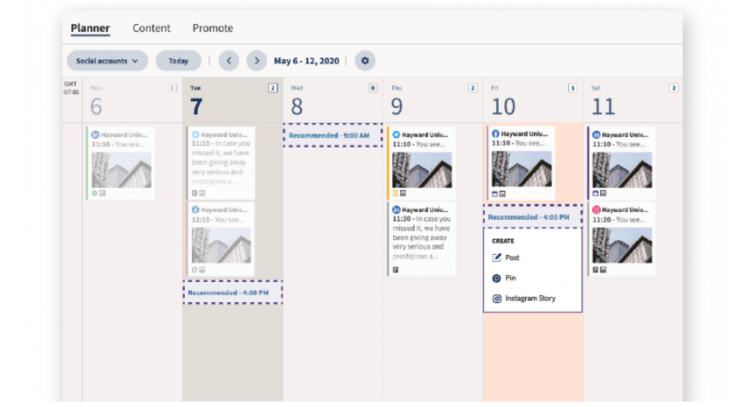
2.3 Automated Call Booking
If you’re not automating booking your calls, not only are you wasting time, but you’re also creating frustration. This is a judgment-free zone to self-identify this behavior:
“Hi, Josh! Seems like you like our app! Would you be up for a demo this Tuesday at 4pm?”
“Hi Josh, thanks for getting back to me! I have another meeting until 3.45 on Tuesday so 3.30pm does not work for me. How about Wednesday at 10.15am? Also, what time zone are you in?”
“Josh?”
Calendly is free and takes five minutes to set and forget. Just enter time windows when you’re usually available and let clients select. It also automatically blocks time slots when you have other calls.
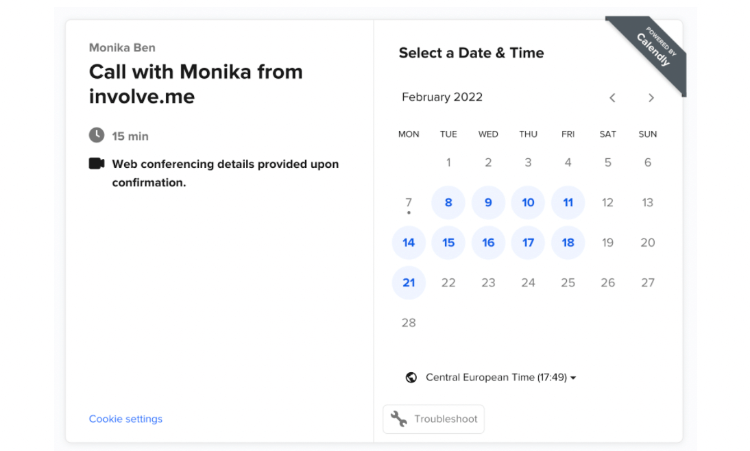
Source: Calendly
2.4 Automated Reporting
There’s a time and place for using an abacus. Like counting how many sheep to gift the emperor without starving your family or learning object permanence in pre-school. 2026 reporting should take as little time as refreshing an auto populated report.
Tools like HubSpot have custom reporting dashboards where you can stay on top of metrics you care about.
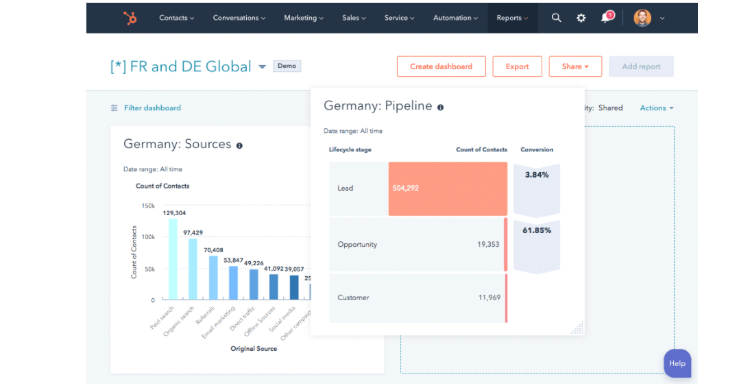
2.5 Automated Onboarding
It costs five to thirty times more to find a new customer than to keep an existing one. You know how much it costs you to generate leads via advertising and how much time you spend working that lead. Automated onboarding helps you create happy customers who stay for a while.
Smart onboarding does two things: it segments customers and it sends each segment relevant content. You can do both witn involve.me. It has free onboarding templates that make segmenting customers easy.
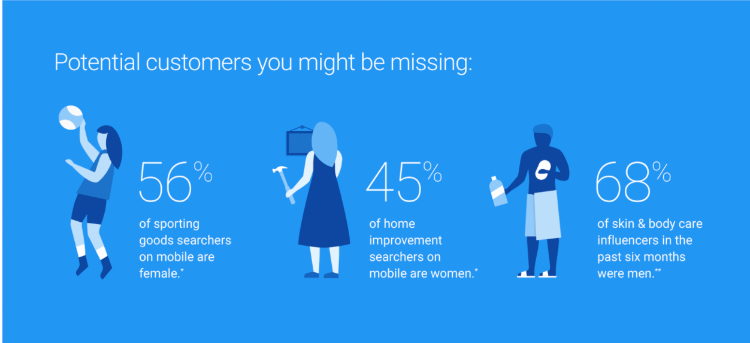
Benefits of Automation
Besides being actual magic, automation helps you grow your business by working smart, not hard. Automating brainless tasks frees up time to tackle real challenges only a talented human like you can handle.
Reduced Workload
The part of your work that gets automated is the part you already hate: emails, copy-pasting, reminders and follow-ups.
Automating your social media posts and ads can save you more than six hours per week. That’s almost a full work day! (I’m saying “almost” in case your boss reads this and finds out about your seven coffee breaks). Setting client appointments or meetings with an automated tool is 80% faster.
Reduced Costs
WyreStorm has increased their revenue by 300K while reducing costs by 75% thanks to automating their processes with HubSpot. How is that possible if HubSpot is an additional expense?
Marketing automation tools can get expensive, especially for large businesses. This deters many people who don’t realize how much time automation saves you.
Think of your automation tools as your hardest working employee: they work non-stop and instantly. They make your team feel larger.
Having a defined automation strategy also means more conversions. Your customers will get the resources and help they need, whenever they need them. This will result in happier customers and we all know what that means: more revenue.
Defined Processes
Deciding what to automate will force you to identify stages in your customer journey. This will help you define and unify your strategy across all platforms.
Automation needs to be triggered by customer actions. It’s up to you to find these actions and attach automations to them. Ask yourself:
What happens after a new customer signs up?
What happens when a customer doesn’t log in for 2 weeks?
What happens if a customer doesn’t open emails?
3. Zero-party Data Trend
Legend has it that every-time Mark Zuckerberg explains that Facebook spying on you is actually a good thing, a mosquito gets its wings. Customers are more aware of what personal data companies collect and how they use it.
There is an increasing need for data collection that’s transparent and respectful to the customer’s privacy. As browsers drop cookie support, the way we collect data will have to change.
That’s why zero party data is gaining momentum. Zero party data is data gathered by simply asking the customer, instead of tracking their online behavior.
Benefits of Zero-party Data
With constant privacy policy updates, zero party data is a necessary evolution rather than a trend. Looking for benefits of doing something that you’re legally required to do seems redundant, since by 2026 you might not have a choice.
But no matter how you look at it, zero-patry data still comes with perks that offer a reliable data-set when combined. To mention a few:
No Tracking Cookies
As browsers are starting to drop tracking cookie support, zero party data is the most accessible alternative. A quick form or survey is easier to implement than an alternative customer tracking system.
Transparent and Honest
Customers are becoming aware of what data is collected and they want to know what it's used for. Saying “Tell us when’s your Birthday so we can send you a coupon” sounds more reasonable than a lone drop down form field with your birth year.
If you ask directly, you’re also less likely to misinterpret your customer’s intentions. Transparent and honest questions will give you more reliable answers than data sets bought from somebody else.
Making assumptions on third-party data like demographics can be deceiving. Did you know 40% of baby goods purchases happen in households with no children? If you don’t ask, you’ll never know who your customers really are.
Proactively Shared Data
As opposed to first party data, which is gathered by tracking customer behavior, zero party data is all the information customers share with you willingly and proactively.
Zero party data leaves little room for guessing, since you simply ask what the customer wants directly. You don’t need data analysts telling you that your new web design got you 17% more visitors with purchase intent aged between 26 and 35.
You can just talk to customers who purchased from you and ask them why. All you need is a quick survey. Grab a free survey template and start collecting zero party data today.
4. The No-code Trend
Forbes considers no-code the most disruptive trend of 2023. Projects and tasks you needed a developer for just five years ago can now be done by a marketing intern. No-code is a way to empower everyone with good ideas to bring them to market without any technical skill.
Tools like Bubble, Webflow or Softr are rapidly growing in both scope and functionality. By 2026 there won’t be a thing you can’t build with no-code. Less businesses will fail as idea → hustle becomes idea → drag & drop.
The true disruptive nature of no-code tools is their ability to recreate popular platforms, but better. Bubble shows people how to build your own platform and not have to share revenue with anyone. They have tutorials for building:
Shopify clones for people who want a fully custom e-commerce platform
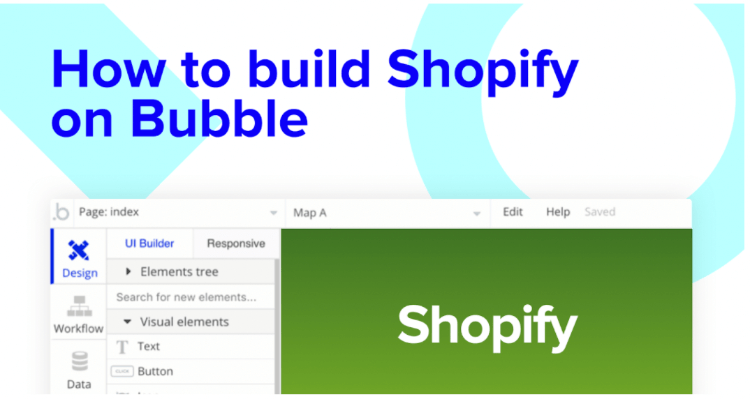
Udemy clones for people who want to sell online courses without splitting profits with Udemy

Ticketmaster clones for people who want to sell event tickets without paying commission to Ticketmaster
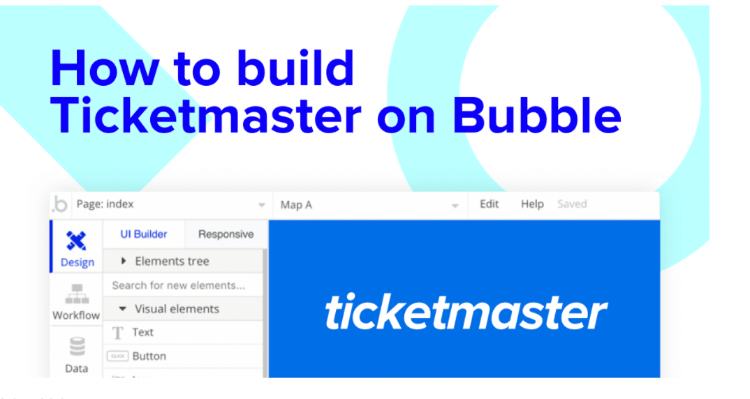
No-code makes people less dependent on tools by enabling them to create their own tools. It already offers a level of customizability you would normally need code for. We can only imagine what no-code will make possible in 2026.
Benefits of No-code
Besides the obvious benefits, like a speedy learning curve or time saved, no-code is taking over because it gives you significant competitive advantages. From learning hubs to actually running your business, here are some benefits of no-code:
Anyone Can Start a Business
Just because you don’t know how to code, doesn’t mean you can’t start a business. Not anymore. A majority of Gen Z wants to start their own business and the market is ready to help them build and run it.
“Only 1% of the population knows how to code. But those people do not have all the great business ideas in the world! #nocode tools democratize the exploration, validation, and execution of new business and startup ideas for the other 99%, and empower them." says Bram Kanstain, Founder of Startup Stash and no-code educator.
Market Ready in a Few Days
The no-code movement originally gained momentum targeting one problem: building a minimum viable product (MVP). Founders used it to validate ideas before hiring a development team to execute them. No-code helped non-technical founders deliver a viable product to market by themselves.
Now, no-code can do so much more. By 2026 no-code tools will be the go-to for building apps, communities, internal tools and any custom functionality you’d need.
Supportive Community
Building things with no-code is like doing crossfit: unless you won’t shut up about it, you’re not serious enough. No-coders love webinars and forums where they can help each other build apps.

Source: Female Founders
Makerpad is a common watering hole for no-coders, but the community thrives on Twitter. Type in #nocode when you’re lacking inspiration and see where the rabbit hole takes you.
5. The Paid Communities Trend
Online communities are the best place for people to ask questions, share industry updates and stay in the loop. Or least it used to be. There are still 10/10 groups on Facebook, Reddit and LinkedIn you can learn from, but those are the exceptions that confirm the rule: social media groups have gotten spammy and toxic.
In come paid communities: a shiny example of “if you want quality, you need to pay for it.” Charging a membership fee weeds out the spammers and gives the admins a paid full time job, so they’re more vigilant. Where do you find these communities?
Paid Slack communities are popular among startups, marketers and remote workers. They offer mentorship, networking and a sense of togetherness for remote workers and niche professionals.
“I believe in the power of communities to help entrepreneurs grow and learn from each other. This is why I created #femalefounders, the first women-only community of female founders on Slack.” says Angela Cois, Co-Founder of Female Founders.
There are also custom built membership platforms where creators run their own show. To mention a few:
Makerpad is the go-to community for no-code fans and non-technical founders
The Weekend Club is for everyone trying to make their side hussle profitable
WorkFrom is a virtual café for remote workers to hang out together
Benefits of Paid Communities
It’s too easy to spend hours scrolling through your feed. Which begs the question: is paying to watch strangers chat worth it? That depends on who those strangers are. If they have solved problems that keep you awake at night, then definitely yes.
Spam-free
A quick Google search on “how to sell on social media” will take you to hundreds of articles, each of which recommends posting in groups. This leads to spam. Interruptive marketers are not aware of how important context is when sharing content in social media groups.
Since anyone can join a free group, many people are there just to copy-paste posts from one group to another. This is not the case if you charge a membership fee and can afford to pay admins who block spammy posts.
Less Noise
On traditional platforms you have to fight to get your two cents in. But leading your own paid community gives you as much space as you want to fill. Aliza Licht, Founder & President of Leave Your Mark describes her Mighty Networks community as follows:
"It's great not to have to fight against an algorithm. That's a big selling point because, at the end of the day, organic social is basically dead. Being able to curate a room or a group or community whereby you have a hundred percent share of voice when you want to have a hundred percent share of voice is a luxury."
Why You Need to Jump on These Trends Asap
The fads and eye-rolls of today will be standard practice tomorrow. There are two reasons these trends are popular: they scale the ambition of goals achievable by your team and they raise the standard of what customers expect.
Staying competitive means staying in motion, adapting to arising market needs. Your brand doesn’t exist in a vacuum. Keep your thumb on the pulse of marketing trends so you don’t fall behind the competition.
Nobody can tell for sure what 2026 marketing will look like, but one thing is certain: you’ll have to adapt. The sooner you embrace these trends, the sooner you’ll see growth.


